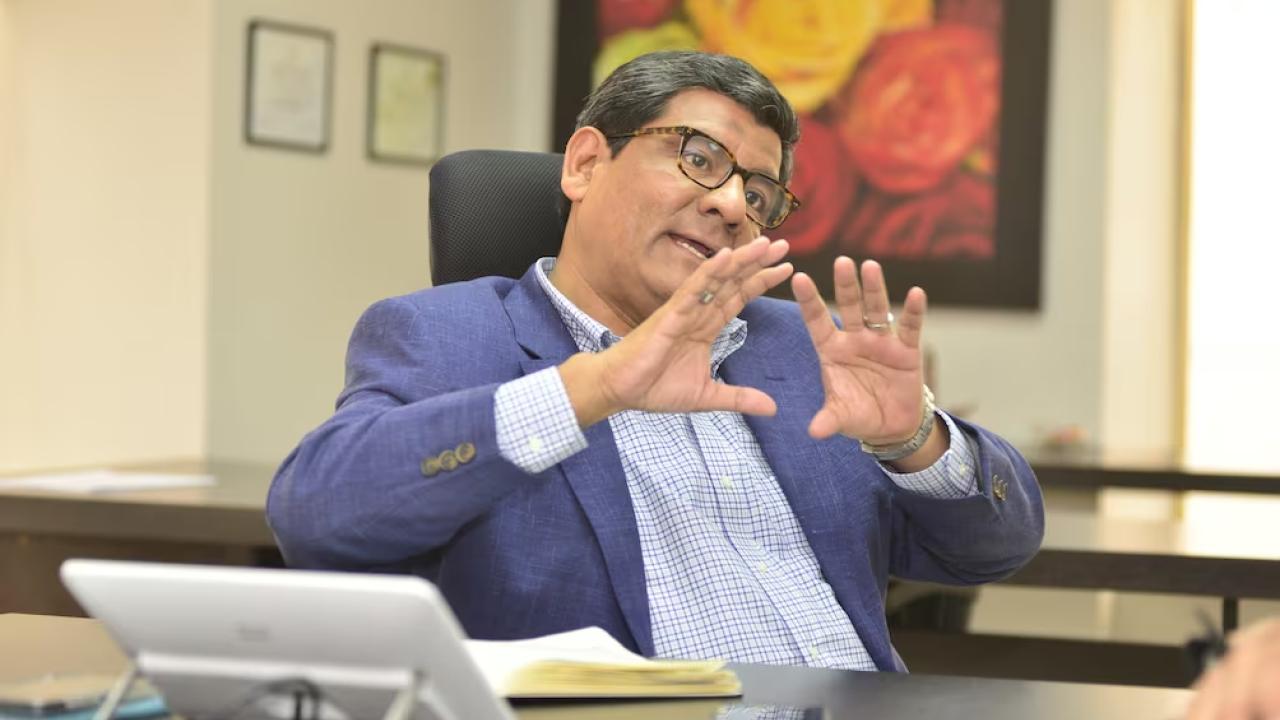
Under the new administration of Donald Trump, the Andean country is seeking to get back on track to reach a trade agreement with Washington.
On January 30, Donald Trump completes his first ten days in his second term as President of the United States, days in which there has been talk of a favorable environment for Ecuador to try to advance in the search for a Free Trade Agreement (FTA) with that country.
Luis Alberto Jaramillo, Minister of Production, Foreign Trade, Investments and Fisheries, discusses the expectations of the Government of Daniel Noboa and reviews the status of treaties with other countries that are already in force and yet to be signed.
- What are Ecuador's expectations for reaching a free trade agreement with the United States during Trump's second term?
I see a great opportunity for Ecuador. I think that the current political and economic situation can lead us to advance along this path. There may even be different paths. In fact, the Secretary of State (of the USA), Marcos Rubio, said that there is a possibility that we can leverage the FTA with Central America, for example. There may be other paths. I think that there are possibilities to reach a FTA with the USA. I think that the geopolitical situation is an opportunity for Ecuador, but of course, we have to take things with caution.
Let us remember that at the end of the previous administration we reached the end of the first phase of a possible FTA with the US.
- How is the IDEA Act going in the US? Was that another option to obtain tariff preferences?
All options are being evaluated, but there will be approaches and there will be more in the very short term in the coming days.
- What effects could all these announcements by Donald Trump for countries in the region, such as Colombia and Peru, have on Ecuador?
It must be taken with caution, these are neighbouring countries and not all the effects are positive. A measure like the one that was announced (for Colombia on tariffs) and which later seems to have been resolved would also have reactions. Colombia, Peru or any other country, with such a large surplus, must go out to the market to sell it at a low price, because it has to be sold in one way or another and that would also affect the international prices of the products we export, because we compete with many of them.
- You mention a trade war. Ecuador has a trade agreement with China and is trying to sign a free trade agreement with the United States. What can be done to prevent Ecuador from being caught in the middle of a trade conflict between two of its main partners?
There would be no conflict based on the type of products we export. What do we export to China? Shrimp, bananas, there is a possibility of dairy products, pitahaya, blueberries, etc. I don't think we are at risk, rather I see opportunities with the United States in terms of security, investments. I don't think there is a conflict of interests (...), perhaps if we were talking about products that are much more sensitive it would be different.
- What has been the progress in trade relations with China after almost nine months of the agreement being in force?
This is a very important agreement on both sides, we are talking about a very important commercial partner for our exports, and with opportunities for growth in non-traditional exports. We are about to sign a phytosanitary agreement for dairy products that gives us the opportunity to export to a very important market. When the Vice Minister of Customs of China was here, he told us that we are within their food health strategy, and there is also an opportunity for meat and all kinds of fruit, such as blueberries.
There are huge opportunities, and in terms of foreign trade, China is working on a global strategy, remembering the Belt and Road strategy, and also on security throughout the supply chain. For this reason, a mutual recognition agreement was signed with the Authorized Economic Operators (AEO), which is a very interesting figure of the World Customs Organization (WCO) through which all foreign trade players are certified.
In this strategy, China is the country with the most AEO certificates in the world, around 6,000, which handles 37% or 38% of the total volume of Chinese foreign trade, and we are also encouraging Ecuadorian producers to become certified.
I think that on both sides we expect there to be significant improvements, for example in the automotive sector, China has a 50% market share for vehicles.
And when will the final trade agreement be signed with South Korea?
At this moment, the playing field is on the Korean side, it is a process already at the Korean level that can take about four to six months. Korea is a market that has many opportunities for Ecuador, it is a very sophisticated market for organic products, we have to work hard on the packaging side, but we see with great enthusiasm the possibilities of being able to export manufactured products, such as chifles or superfoods, blueberries already packaged for final consumption.
- Did the political situation in South Korea have anything to do with the delay in signing the agreement?
No, we have discussed this with both South Korea and Canada. With Canada there is a change of government, business continues without variation, there is no impact on the processes as a consequence of the change of government in Canada. The issue with South Korea, I repeat, could take four to six months and with Canada it could be in three or four months.
- And the United Arab Emirates?
There is a lot of interest in the United Arab Emirates, and it must be taken into account that it is also a distribution hub within the region. It is not only that market and it is a very important source of investment for Ecuador, it is an opportunity for our export products, there are chifles in Dubai! It is a winning product that is having good penetration in the different markets, it is becoming a snack that is becoming more and more popular every day.
- We signed an agreement with Costa Rica and the Dominican Republic and Panama are on the way. What about Central America and the Caribbean?
Central America and the Caribbean are the natural export markets for the Ecuadorian industry. I have spoken with many industrialists and they are all aiming for those markets. We need to have agreements with all the Central American countries. We already have one with Costa Rica, we are also making progress with the Dominican Republic. There is currently an agreement on free trade zones, we are also in Panama. There are issues to be resolved with Panama, but it is a large market.









